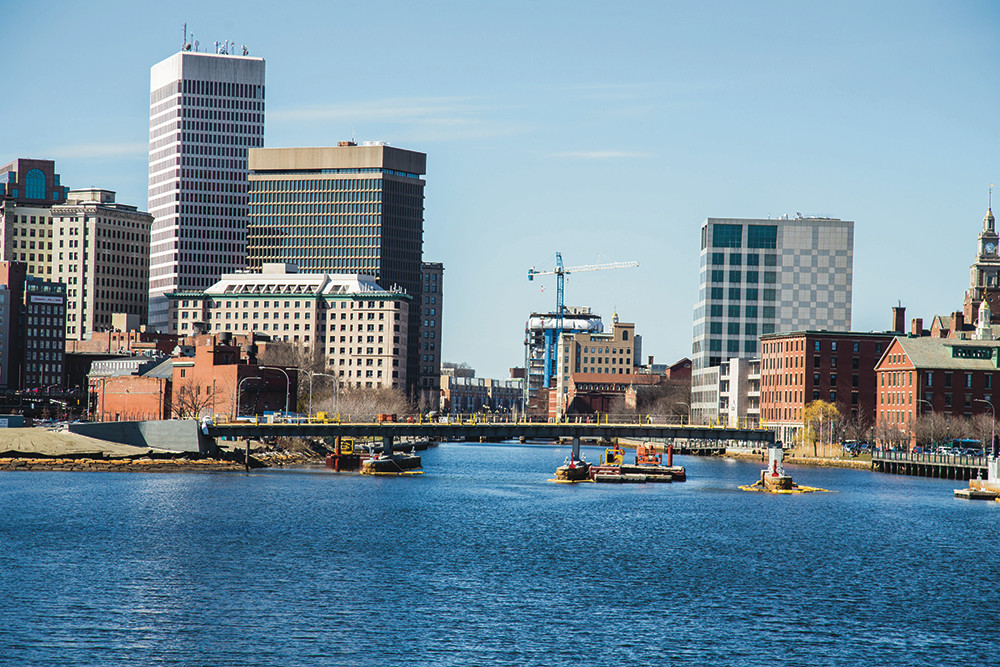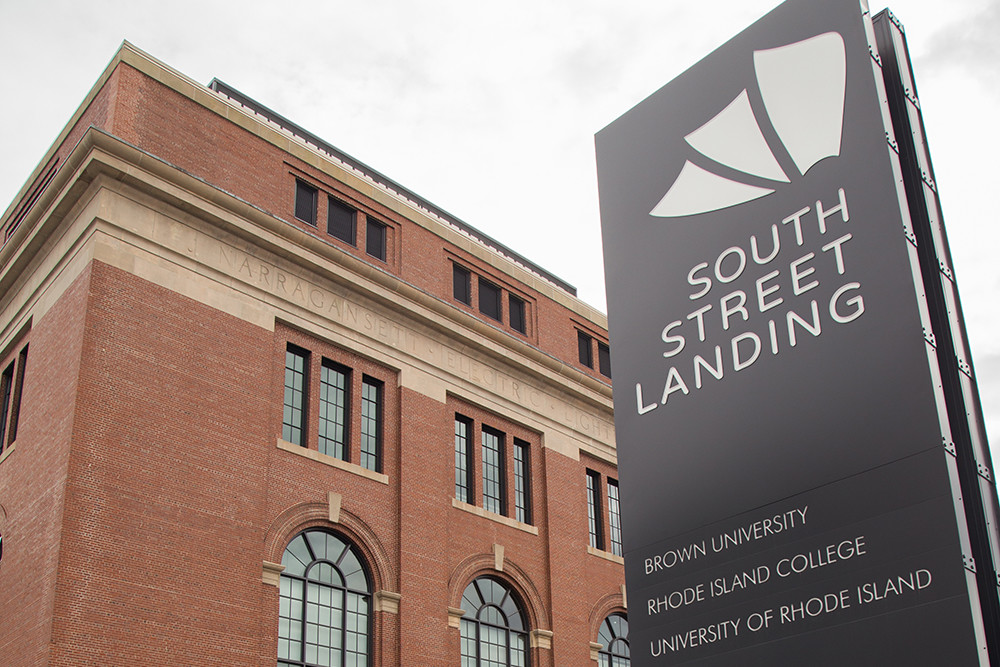Providence has been eagerly watching the rapidly-developing Jewelry District for the last few years. But when the neighborhood received a gushing article in the New York Times last November, it confirmed what we’d all been thinking: something special is happening here. The feature, “Building a Buzzy Hive of Invention and Collaboration,” suggested that Providence was on its way to becoming the next “bustling hive of invention and collaboration, usually huddled around major research universities or tech companies, and often with dense infusions of retail, restaurants and housing,” and that the Jewelry District was going to be on the ground floor of that growth.
It's been a long, painstaking road to bring such a vision to life, but many public and private entities are determined to make Providence's very own innovation district a reality – and we are finally seeing some long-awaited, tangible results. More importantly, we’re seeing an important neighborhood that is coming into its own, with an influx of residents coming in to take advantage of the area’s growing potential. The Jewelry District has always had a name, but now it’s getting a new identity, one as unique as the West Side’s, College Hill’s, or Downcity’s.
Welcome to the new Jewelry District.
The Jewelry District takes its name from the neighborhood’s most famous industry, costume jewelry manufacturing, which earned Providence the distinction of being the jewelry capital of the world. But in the 1960s, the area became literally overshadowed by the former I-195 highway overpass, and although a few of the original mills continued manufacturing baubles and findings, most of the industry left the area as American manufacturing slowed down.
Sharon Steele has been involved with the Jewelry District Association since 1987 and is currently serving as the group’s interim president, so she is very familiar with its past. Steele has also helped to actively usher in the exciting changes happening right now as the district seeks to reassert its legacy of leadership within a new era of technology. From the early days of the highway relocation project at the start of the new millennium, Jewelry District business owners, residents, and city officials knew that the neighborhood was a diamond in the rough: 25 acres of soon-to-be cleared waterfront property, and the chance to build a physical bridge connecting the East Side to downtown Providence surrounded by beautiful public park area.
“We have always realized that we were a work-in-progress,” says Steele. “We have been given an amazing opportunity to literally create the neighborhood that we desire. And with that clearly comes great responsibility.”
One of the crown jewels of the neighborhood will be the long-anticipated pedestrian bridge, which is finally arching its way over the Providence River. After delays caused by a fierce battle with PawSox owners who sought the land for a new ballpark, the project is on track to be completed and usable this fall, with an opening ceremony slated for sometime in October. Steele says the JDA has been “shepherding [the bridge] since 2006” through its offspring organization, Building Bridges. The vision she describes is of a “green necklace” of park land around the river, “spaces where we want the public, citizens, and tourists to have easy access and heavy use of that area.”

Photo by Brandon Harmon
It’s easy to picture that vision. On the South Water Street side of the bridge, regular outdoor events like the Providence Flea and 10,000 Suns – the sunflower-based art installation – have made the area a destination. On the Jewelry District side, you have the Dune Brothers’ seafood shack, which just reopened after an inaugural pop-up run late last fall. A gathering place for residents, workers, and visitors amid the new construction happening in the neighborhood, Dune Brothers offers a front row seat for all the exciting changes in the works.
Peter McNally, Executive Director for the 195 Redevelopment District Commission, agrees with Steele’s vision for the district: “We can't overstate how important [the pedestrian bridge and the park] are,” he says, pointing out that it's tough to attract developers and owners without them. “Those are things within our control, and they will be magnificent.” The public sector is working hard to create “that sense of place.”
The 195 Redevelopment District Commission has played a key role in shaping the new direction for the neighborhood. There had long been talks of developing an incubator for learning, development, and technological growth all in one place in Providence and with the availability of the 195 land, the Jewelry District was the perfect location, especially given its history as an Industrial era leader of innovation. South Street Landing is the poster child of the new Jewelry District. The $220 million project has converted the long-derelict South Street power station into the new consolidated home of all of Brown University’s administrative offices and the Rhode Island Nursing Education Center, a joint venture between the nursing programs at RIC and URI. The next two phases of the project include the adjacent, 250-bed River House Student Housing Project and a 744-space garage. The Wexford Innovation Center, which broke ground last fall on two acres of 195 land, will be home to anchor tenants Cambridge Innovation Center – a firm that invests in and nurtures young tech entrepreneurs – and the Brown School of Professional Studies. All of this is on top of the Warren Alpert Medical School of Brown University, which has called the Jewelry District home since 2011.

Photo by Tony Pacitti
“[These companies] want to be right next to Brown Medical School,” McNally says. “Being in Mansfield, Massachusetts doesn't cut it.” Young professionals, in kind, view Providence as “a cool city. They want to be here.”
And both the commission and the JDA are eager to bring them here: “Delivering an environment where they can live, work, and play is a critical demand of the Millennials who will make up the lion's share of the workforce,” Steele says.
Steele estimates that 200-225 residents currently live in the district based on rough condo counts for longstanding complexes like Imperial Place, but that’s already begun to change. The lack of residents and huge parcels of clear land have been a blessing for planning purposes, because unlike other more densely populated neighborhoods, like Olneyville, there are few communities to feel displaced by the coming changes. Right now, the Jewelry District is as close as a centuries-old American city will likely ever come to having a “blank slate” – a historic gem ready to be polished and repurposed.
Several residential housing developers are getting in on the ground floor of the new district. The 95 Lofts, a six-story residential complex at 95 Chestnut Street owned by Waldorf Capitol Management Investors, was an early arrival to the party. They made the most of the 114-year-old former Irons & Russell pin and charm manufacturing building's historic accents when designing the conversion, keeping its ornate birdcage elevator, wooden beams, maple floors, and exposed brick walls while making it completely green, even down to the air filter system. By fall 2017, all 59 units were rented out to a mix of Brown medical students, RISD and Johnson & Wales graduates, young professionals, and a few families. Many have already renewed their leases, according to property manager Kristen Viveiros of Acropolis Management Services, who feels that the neighborhood is already becoming much more resident-friendly.
“It's nice to see people walking around the streets, and it's definitely nice to see it growing,” says Viveiros. She cites South Street restaurant and bar The District as a popular go-to spot for residents. PPAC is right around the corner, universities are within walking distance, and amazing restaurants are nearby. “It's still up and coming in this area, and I think everyone's excited for that,” she adds.
Another residential projects in the pipeline is 44 Hospital Street, which will feature commercial use on the first floor and residences above. A parcel adjacent to 95 Chestnut Street hasn't broken ground yet, but is expected to have about 90 units. Overall, Steele estimates roughly 1,000 new units are in development between the Jewelry District and Downtown.
“When you just think about what we have smack in the middle of the district, we have all of the required elements,” Steele says, listing advanced education, developable parcels, and housing being constructed specifically for it. “We are literally creating this neighborhood as we go along.”
Of course the Jewelry District is not actually a blank slate. Restaurants like CAV and Olga's Cup & Saucer, watering holes like Art Bar and Nick-a-Nees, and organizations like the Providence Animal Rescue League have been thriving there for years and form a constellation of welcoming neighborhood go-tos for newcomers as foundations are poured for new businesses.
Another mainstay is the Providence Children's Museum (PCM), which relocated to South Street from its original Pawtucket location more than two decades ago thanks to the affordability and space offerings of the 17,645 square-foot, 100-plus-year-old former jewelry factory. For nearly 40 years, PCM maintained a strict “no digital technology” policy for its little patrons, instead using colorful displays involving water, simple physics, history, art, nature, and more. This stance evolved under the leadership of Caroline Payson, who joined as Executive Director two years ago.
After decades of feeling like “a lone outpost,” the museum fully supports the innovation district concept and wants the community to remain cognizant of the fact that “technology is scaffolded up,” says Payson. “It starts with giving kids a hammer, or letting them cut out paper.” Certainly all of the Elon Musks and Larry Ellisons of the world started out as small children. In January, PCM will launch a three-year Creativity Takeover with constantly changing maker and design-oriented programming geared towards “engendering creative confidence in kids.”
“We're a crucial part of the process,” Payson says. “We really embrace being in this kind of innovation technology corridor,” and that having programming focused on the cultivating the early roots of technological development “makes us an even better fit.” Payson is excited about the vision of families strolling across a pedestrian bridge from downtown to visit the museum.

Image courtesy of 195 Redevelopment District Commission
It’s all moving forward. Cranes are hard at work erecting scaffolding. New shoots of growth are sprouting up all over, and it's all coming together thanks to the many collaborations and partnerships forged between the private and public sectors, industry and academia, national and local businesses and governments, arts and technology, and employing the skills, creativity, and engagement of individuals of all ages and backgrounds. Through this careful, deliberate approach, a literal and metaphorical bridge is being built not just to connect city districts, but to leadProvidence from its historic past into a leadership role in technologically-optimized design.
“It's been beautifully planned for years and years,” says Steele. “This is sort of the final leg of this extraordinary reawakening of this beautiful, central part of Providence.”
Other items that may interest you





Comments
No comments on this item Please log in to comment by clicking here